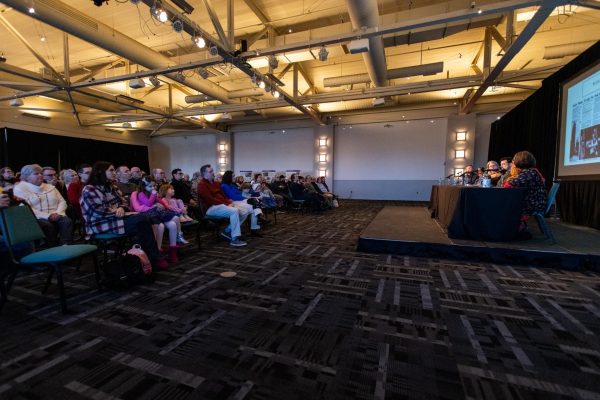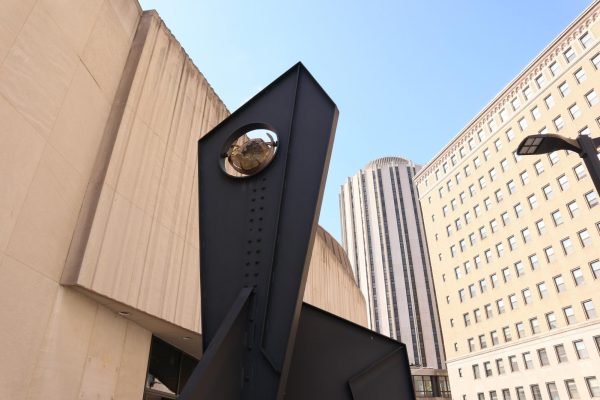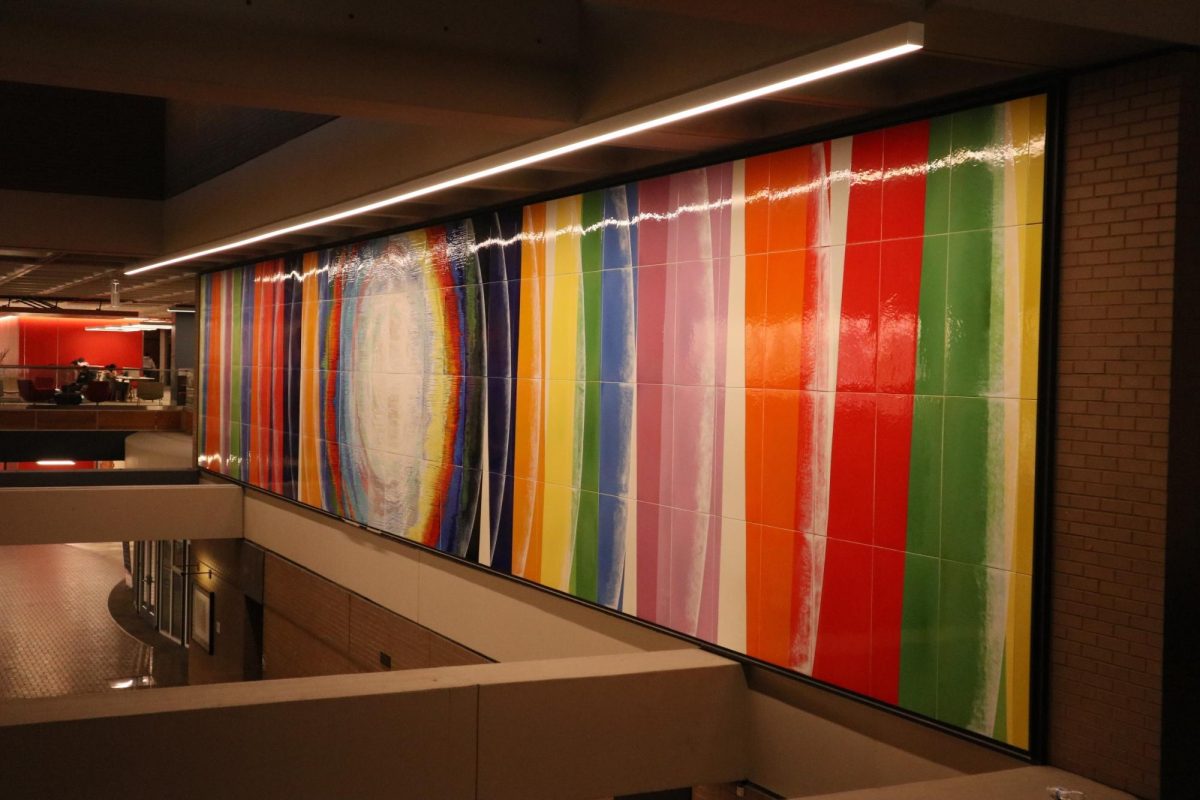Whether they know of his name or not, many Pitt students are familiar with the work of the late artist Virgil Cantini. His art adorns many buildings around campus, ranging from the sculpture in front of Lawrence Hall to the murals in Posvar Hall and the Chevron Science Center.
Cantini was even behind the hanging metal sculpture in Posvar, “Skyscape,” perhaps better known by its student-given nickname — the death trap.
Cantini was the subject of a program presented by the Heinz History Center on Sunday afternoon focusing on the preservation of a 1964 mosaic that was recently relocated from its original location downtown. Melissa Marinaro, director of the Italian American Program at the History Center, said the downtown mosaic was a turning point in Cantini’s career that led to his large public works on display at Pitt.
“He believed that the arts should be in the public realm and accessible to all people,” Marinaro said. “This piece marks the beginning of a series of public artworks made in the 1960s at a large scale,” Marinaro said, referring to several pieces of Cantini’s art found on the Pitt campus.
Cantini, who founded the University’s Studio Arts department, created 13 pieces of public art for the University, with most still on display today. His work coincided with the mid-century urban renewal efforts known as the Pittsburgh Renaissance, appropriate given Cantini’s Italian heritage.
“Locally, Cantini is known as Pittsburgh’s Renaissance man because of his Italian roots and his versatility with various artistic mediums,” Marinaro said. “He used long-lasting materials that stood the test of time.”

The Downtown pedestrian tunnel mosaic is an example of an abstract cityscape by Cantini. In 2018, a pedestrian tunnel underneath Bigelow Boulevard Downtown was expected to be filled in with dirt for the construction of a new park. For local preservationists, there was one issue — on the walls of the tunnel was the 1964 mosaic created by Cantini.
“We were basically told that the designers were the park did not see a place for these modern mosaics in their new design,” Cantini-Seguin said. “They had another theme going, and so at that point, the plan was to try to save three [of the 28] mosaic panels.”
After almost five years of undergoing restoration while in storage, the mosaic was reinstalled using federal funding in the Steel Plaza T station earlier this month. Its installation was made possible through the efforts of preservationists including Preservation Pittsburgh and the City of Pittsburgh.
Cantini’s daughter, Lisa Cantini-Seguin, said Cantini was inspired to create public art following a Guggenheim Fellowship in 1958.
“He had seen different decorations of public spaces in Europe, and so he was trying to bring that idea back to the United States,” Cantini-Seguin said.
Cantini, who passed away in 2009 at the age of 90, taught in the Pitt Studio Arts department for 38 years and often used Pittsburgh as inspiration for his work.
“My dad would drive all over the city of Pittsburgh to see from above and from below, from dawn until nighttime,” Cantini-Seguin said. “He wanted to see what the city looked like, since he worked in abstract.”

Brittany Reilly, chair of the Pittsburgh Modern Committee, said Pitt is the epicenter of Cantini’s existing public work.
“A great deal of [Cantini’s work] is at the University of Pittsburgh, given his 30-plus years there as an educator,” Reilly said. “Some of those works were commissioned for their particular space, and others were relocated.”
Of his works at Pitt, Cantini was proudest of “Science and Mankind,” a large porcelain enamel mural hanging in front of an auditorium in Chevron Science Center. Another Cantini mural, “Enlightenment and Joy,” overlooks the main floor of Posvar Hall. Reilly said Pitt deserves praise for preserving the mural during the recent renovation of the building.
“‘Enlightenment and Joy’ is still in its original location even though there were renovations in the building within the past few years,” Reilly said. “The panels are a seamless range that reads as one.”
“Ode to Space” outside Lawrence Hall is another example of Cantini’s interest in abstract representations of celestial objects. The sculpture was installed as a sentimental tribute to former Chancellor Edward Litchfield, who died in 1968. Christopher Drew Armstrong, director of Architectural Studies at Pitt, said Cantini’s art gives buildings character.
“They speak to this idea that buildings aren’t just utilitarian,” Armstrong said. “There’s a larger vision of enrichment where works of art should be understood as part of these environments.”

On the first floor of Hillman Library, two large tapestries — named ”Ox” and “Rooster” — were removed during the library’s renovation. Reilly said she would like to see the tapestries reinstalled when the renovation is complete.
“I want them to see those go back,” Reilly said. “Those tapestries were incredible, and I would like to see them reinstalled when the renovation is done.”
“I guess the lesson to be learned is talk to everybody you know, and maybe the solution will somehow arise from the chaos,” Cantini-Seguin said. “That’s what happened here.”
Although 15 years have elapsed since Cantini’s passing, his artwork at Pitt survives as a testament to his imprint on the city.
“If Cantini wanted a museum of his work for the public, then I think Pitt’s campus is that museum,” Reilly said.



